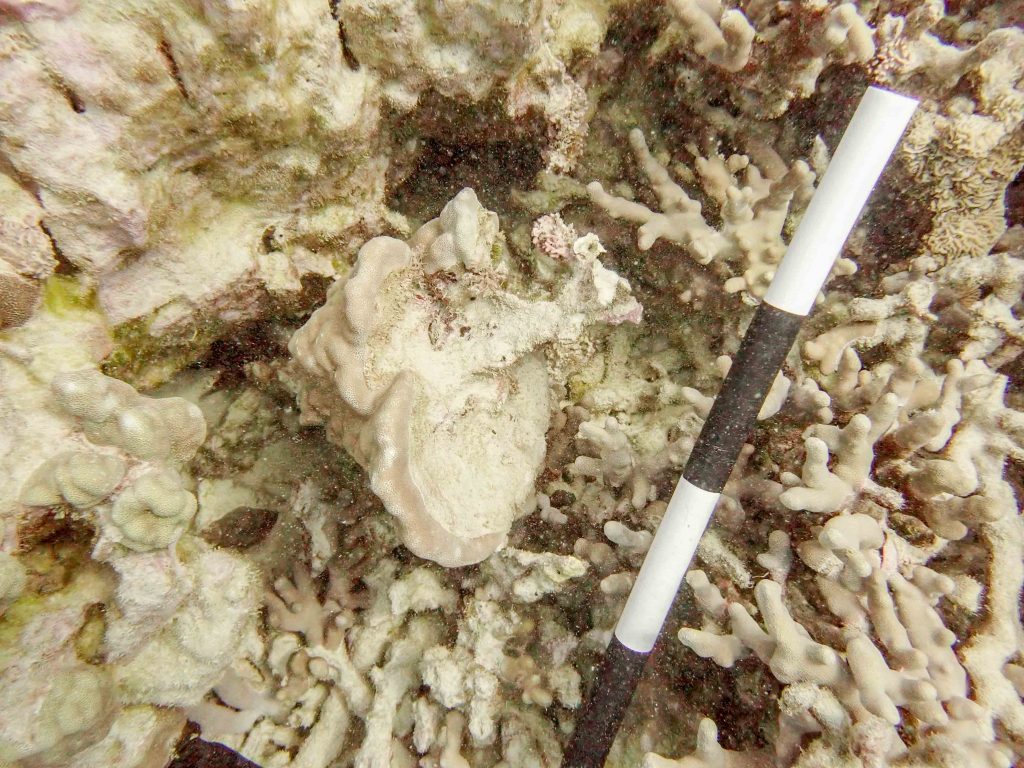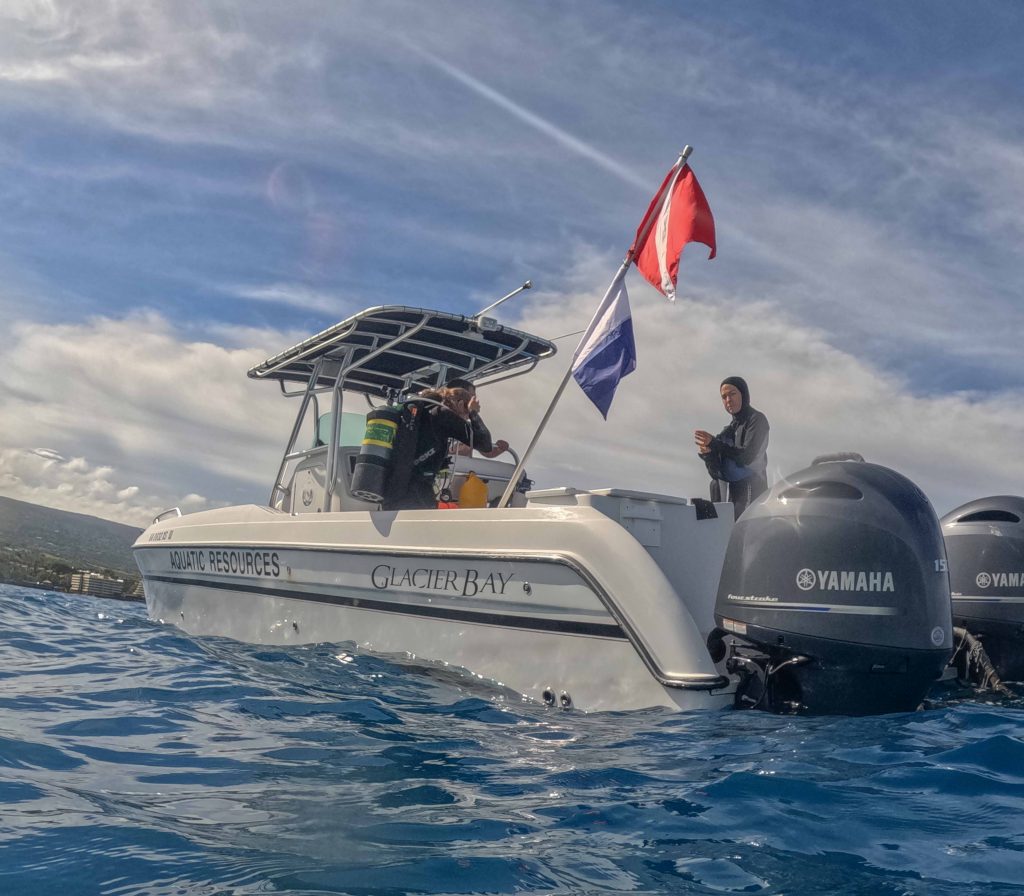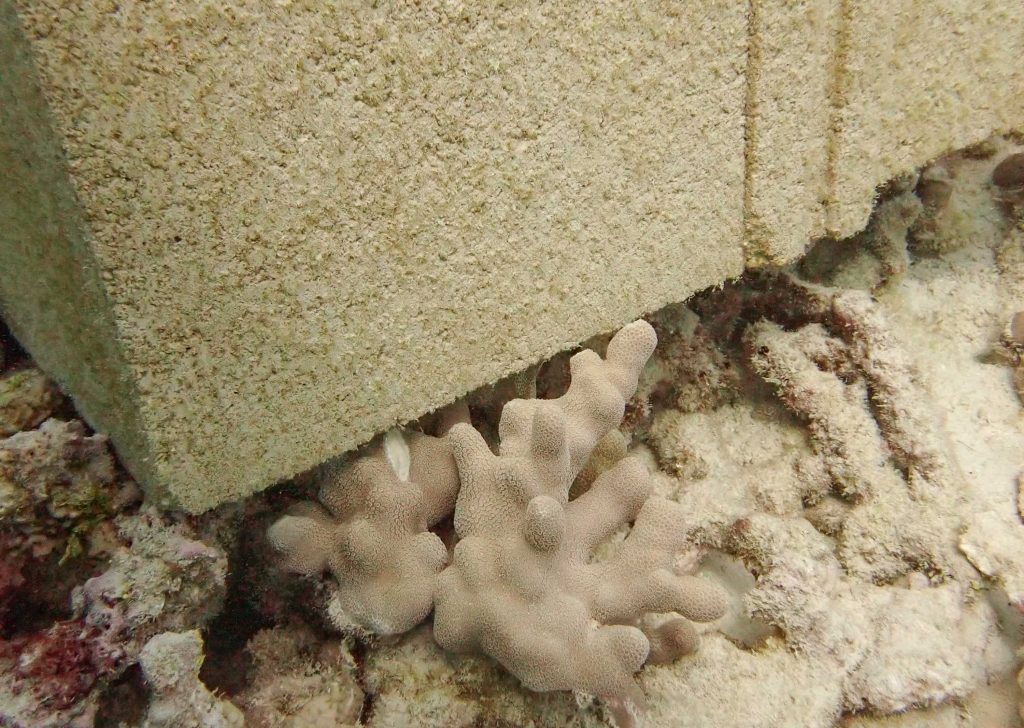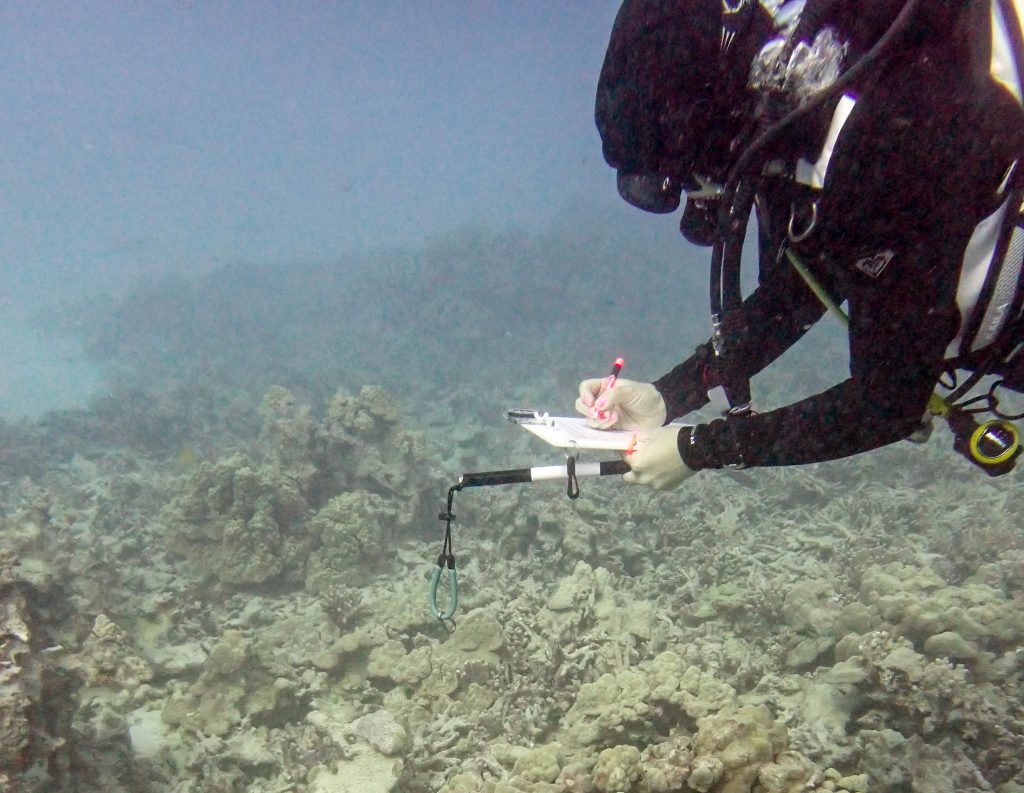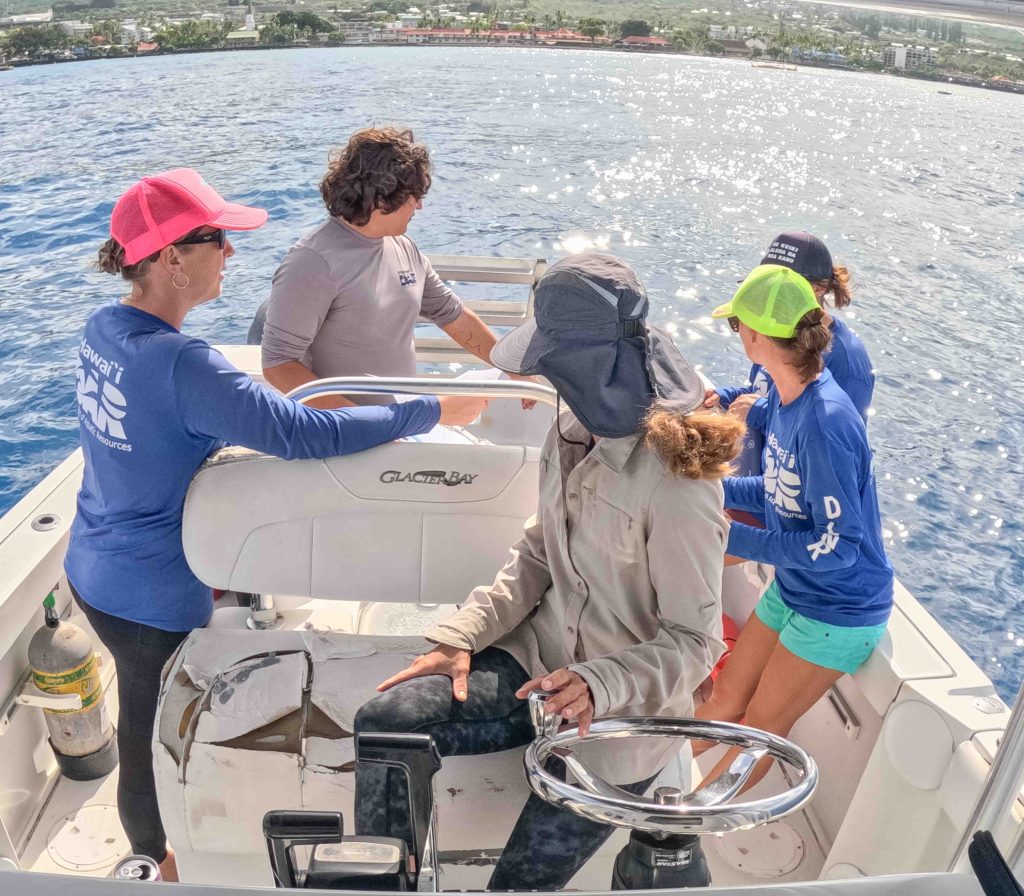Cinder block lane markers for Kona canoe regatta damage 50 to 60 coral colonies

To mark lanes for the Keauhou Canoe Club’s Founders Regatta in Kona last weekend, 60-pound cinder blocks were put in Kailua Bay to keep in place floating flags.
An assessment conducted Tuesday by two state dive teams found 16 cinder blocks caused damage to about 50 to 60 coral colonies, according to a press release from the Hawai’i State Department of Land and Natural Resources.
On May 27, the start of the outrigger paddling race was delayed while the state conducted a preliminary assessment of the situation in which 16 of the 28 cinder blocks were dropped on live coral.
After determining the damage already was done — and more damage would not incur during the regatta — and documenting the locations of the cinder blocks for more thorough assessment, the event was allowed to take place.
On Tuesday, dive teams from the state Division of Aquatic Resources documented and photographed the damage. At that time, all but three of the blocks had been relocated onto mostly dead coral rubble.
Chris Teague, a West Hawai‘i aquatic biologist with the Division of Aquatic Resources, led the dive teams.
“From what I’ve learned, the canoe races have been using existing block moorings to hold lane flagging for the past 40 to 50 years,” he said. “The new ones that were placed for this racing season are the ones that are causing damage and are the ones we are concerned about.”
Teague estimates the damage to individual colonies ranges from 5% to 100%, but overall, it is certainly less than prior reef damage caused by grounded vessels or boats that have broken loose from their moorings.
Hawaiian corals grow extremely slow; therefore, it could take 1 to 2 years for the corals to re-grow. Fortunately, the colonies are still intact to recover from the damage, the press release said.
The dive team’s findings will be compiled into a written report that will be reviewed by division leadership, which will then decide whether to submit an action to the Board of Land and Natural Resources.
“We’re tasked with managing and conserving our ocean resources and coral reefs, as the foundations of life in the ocean are vital to its overall health,” division administrator Brian Neilson said. “As we have done with past coral damage cases, we will work with the canoe club on a settlement which may supplant monetary penalties with community service or other mitigation measures.”
Long-term, the state plans to work with canoe racing associations on the possibility of installing permanent mooring pins of some sort in race lanes that do not impact coral reefs.
“Canoe racing is grounded in Hawaiian culture, and we recognize its importance to thousands of people across the state, said Dawn Chang, chair of the Department of Land and Natural Resources. “We appreciate the leadership of the Keauhou Canoe Club working with us on Saturday by halting its race so we could GPS document the damaged coral. We’re confident that we will collectively come up with a plan that allows canoe racing to continue while simultaneously protecting our precious natural resources.”
Editor’s Note: The number of coral colonies was downgraded to 50 to 60 due to the Department of Land and Natural Resources correcting its initial news release.
Sponsored Content
Comments




